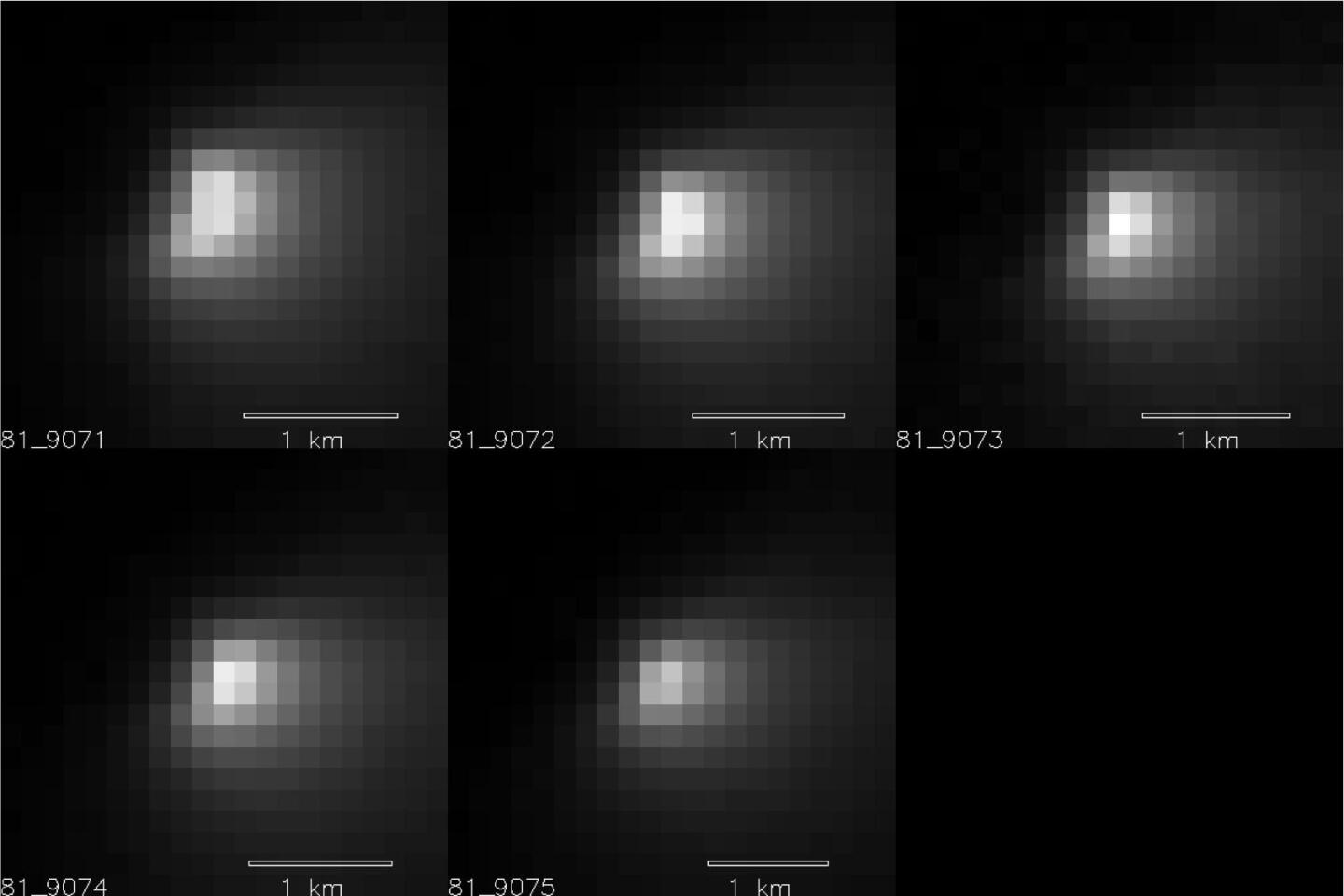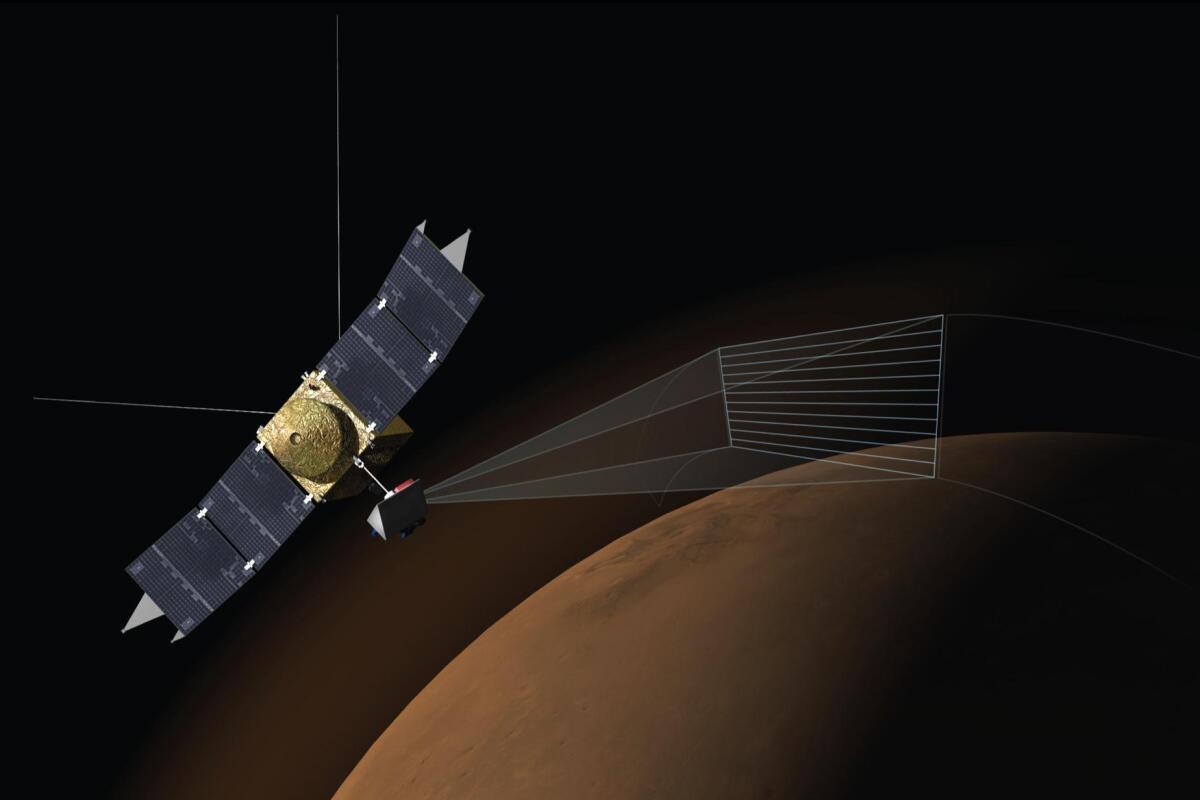"Dodging a bullet" is a well-worn cliche, but it looks as if the small armada of space probes orbiting Mars dodged a shrapnel blast last month. According to observations made by NASA and ESA orbiters, the extremely close flyby of comet C/2013 A1 Siding Spring was accompanied by a meteor shower larger than any seen on Earth.
On October 19 at 11:27 am PDT, Siding Spring reached its closest point to Mars, passing within 87,000 miles (139,500 km) of the planet or about a third of the distance between the Earth and the Moon. NASA’s orbiting probes were in no danger of colliding with the comet, but with it traveling at a speed of approximately 125,000 mph (56 km/sec) and the dust from its tail that reached Mars 100 minutes later traveling just as fast, mission control took no chances.
In anticipation of the encounter, NASA's Mars Atmosphere and Volatile Evolution (MAVEN) mission, NASA's Mars Reconnaissance Orbiter (MRO), and ESA's Mars Express were sent into orbits timed to place them on the opposite of the planet from the incoming debris of the comet’s tail. However, they weren’t just hiding. During the comet’s passing and after, they trained their instruments on Siding Spring and Mars as they studied the comet’s nucleus and the effects of the passage on the Martian atmosphere.

NASA says that the MAVEN spacecraft’s Imaging UltraViolet Spectrograph (IUVS) measured changes in the ultraviolet spectrum of the atmosphere and it directly sampled the atoms in its immediate vicinity using its Neutral Gas and Ion Mass Spectrometer. Meanwhile, the MRO's Shallow Subsurface Radar (SHARAD) took radar images of the ionosphere and its High Resolution Imaging Science Experiment (HiRISE) camera took images of the comet’s nucleus. In addition, Mars Express’ Mars Advanced Radar for Subsurface and Ionospheric Sounding (MARSIS) monitored the electron density in the atmosphere.
Though there was never any danger of Siding Spring colliding with Mars or any of the orbiters, its tail contained gas and fine dust particles that, when they hit the Martian atmosphere and vaporized, caused what was probably a spectacular meteor shower, though one that no one could see except for the Curiosity and Opportunity rovers.
The impact of the shower caused a temporary and very strong layer of ions to develop in the ionosphere above Mars. According to NASA, this is the first time such an effect has been seen on any planet. MAVEN discovered a spike in magnesium, iron, and ions introduced by the meteors that lasted for several hours and faded over a two-day period. According to the space agency, the levels were greater than anything from a meteor shower seen on Earth, and provided clues as to the composition of Siding Spring. This is especially important because these were the first direct chemical measurements of an object from the Oort Cloud on the edge of the Solar System, where the comet originated.

Added to this, the MRO discovered that the comet nucleus was smaller than thought with a diameter of only 1.2 miles (2 km) and rotates once every eight hours, and the radar images it took were smeared due to energy levels ten times greater than normal. These levels were confirmed by Mars Express, which also saw a rise in ion density at a lower altitude than normal. NASA says that the probes will continue to study the long-term effects of the shower.
"This historic event allowed us to observe the details of this fast-moving Oort Cloud comet in a way never before possible using our existing Mars missions," says Jim Green, director of NASA's Planetary Science Division. "Observing the effects on Mars of the comet's dust slamming into the upper atmosphere makes me very happy that we decided to put our spacecraft on the other side of Mars at the peak of the dust tail passage and out of harm's way."
Source: NASA








